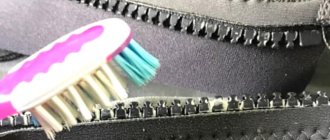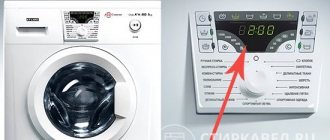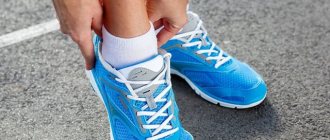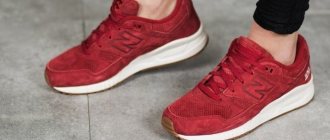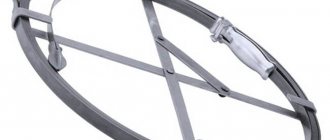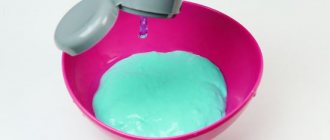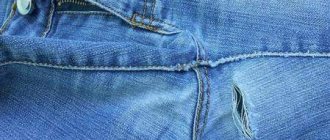It happens that owners of sports shoes are faced with a problem: a new pair (just from the store) squeaks desperately. Or your old favorite sneakers suddenly begin to make unpleasant, sometimes very loud sounds. How to proceed? To begin with, understand the situation.
Creaking occurs when moving parts rub against each other. Or those that should be motionless, but have become unstuck, deformed, and started to dangle. First of all, you need to find out why your sneakers squeak when walking or running.
What could be the source of the sound? Anything. From bottom to top: raised tread, lower part of the sole, seams with the midsole, seams with the upper, insoles, stitched seams, heel lock, tongue, even laces when sliding in the eyelets.
Why does creaking occur?
- Low quality materials/careless tailoring. Shoe products squeak immediately if the elements have not yet been worn in somewhere, or over time - already due to damage.
- Violation of manufacturing technologies. The most common and, alas, worst removable cause. The problem with overtightened seams can usually be solved (though it depends on what kind of threads), but if particles of foreign materials get between the layers of the composite bottom, or the air cylinders are made improperly, there is nothing to do, the pair is only suitable for discarding.
- Internal voids. They arise both as a result of the same ignorance of technology, and because of the low quality of materials that are deformed and destroyed. The first appears immediately, the second - after some time of active wear.
- Violation of proportionality. For example, a pair of ridges on the tread are higher than the neighboring ones, or the insole is cut a little smaller in size, and therefore “rides” inside the sneaker.
- Overdrying. One of the reasons why it is forbidden to dry sneakers near radiators is so that they do not become excessively dry, become deformed and, in addition to other troubles, begin to creak.
According to the reason why sneakers squeak when walking, there are several main ways to deal with unnecessary sounds: moisturizing, warming up, softening, eliminating mechanical interference and - the most difficult thing - filling voids.
Increased fatigue. The child gets tired quickly
What to do if the shoes are too big
In most cases, increased fatigue and exhaustion of the child’s nervous system has very specific causes and is quite easy to correct or treat.
It is very important to understand and find the reasons why fatigue occurs. Treatment must precisely target the cause of the problem.
Unfortunately, we often see the opposite examples. For example, a child gets tired due to a chronic infection, and he is taken to a psychologist and “behavior is corrected,” or, for example, the cause of fatigue is related to hormonal levels, and he is sent to a psychiatrist and prescribed medications that are unnecessary in this case. The opposite situation is possible: the child does not have any special health problems, but only psychological problems that lead to fatigue. It is necessary to clearly understand the reason for what is happening, and only then the treatment will bring the desired result.
A child's abrupt switching from active and dynamic games to complete loss of strength, in which the child can fall asleep in one minute, is the norm for children from two to five years old.
At this age it will be absolutely normal fatigue followed by a transition to activity.
Increased fatigue should alert you if:
- The child is so tired that he cannot concentrate, lags behind his peers in learning and mastering new skills;
- The child cannot sleep or wakes up at night, feels drowsy during the day;
- In the morning the child wakes up tired, has difficulty turning on, refuses breakfast;
- The child often suffers from colds;
- You notice a prolonged (more than 2 weeks) general lethargy in the child, dark circles under the eyes and pallor, a decline in mood;
- The child is in a negative mood most of the time, gets offended and cries for no objective reason;
- Drowsiness and indifference to previously favorite activities appear;
- The child complains of headache or dizziness;
- The child loses motor dexterity, often changes positions when reading or doing homework;
- The child complains of fatigue and/or pain in the legs.
Increased fatigue is mainly due to the fact that the child's nervous system cannot maintain arousal long enough to support everyday tasks, including learning, mastering skills, speech, and so on.
A tired child finds it difficult to maintain attention on one thing, it begins to dissipate, as a result of which the child resists learning, which turns out to be too difficult for him. The situation develops into conflicts, and the reason for this is increased fatigue
- Exhaustion of the child’s nervous system due to prolonged stress,
i.e. “getting stuck” of the body in a state of preparation for responding to danger. The stress response is designed by nature to be short-term; it comes to quick realization and a way out of stress. But if suddenly the stress readiness in the child’s body becomes long-term, the nervous system is gradually depleted. Thus, brain exhaustion occurs and, as a result, rapid fatigue. - .
Normal healthy sleep consists of four stages, of which the deepest and most important are the 3rd and 4th. With a deficiency of deep stages of sleep, nervous exhaustion occurs quite quickly. Frequent variants of sleep deprivation in children: the child has a normal sleep duration, but sleeps superficially, the child sleeps with awakenings, the child has shortened sleep (falls asleep for a long time or wakes up too early). Some sleep problems can be clarified by performing overnight EEG monitoring. - The presence of increased intracranial pressure
, when the brain is pressured by an excessive amount of cerebrospinal fluid and cannot remain in a state of excitement for a long time. - Chronic diseases,
and very often these are metabolic disorders, infections (adenoids, chronic tonsillitis), decreased thyroid function or other endocrine imbalance. Chronic infections can be associated with the herpes virus, streptococci, which very often cause such chronic fatigue. In this case, we will suggest that you put the child’s immunity in order, treat infections, and then the health of the child’s nervous system will be restored.
How to find the problem area
The first operation is banal: unlace, carefully straighten the lacing area, wrinkle the heel, see if foreign objects are caught somewhere in the stitching, check the position of the insoles; if they are removable with instep supports, you can swap them. Then carefully lace up: without tightening, positioning the tongue correctly.
Still squeaking? Then the algorithm comes into play:
- Walk on the carpet (preferably natural) - if the squeaking stops, the protector makes sounds.
- Inspect from the outside - tight stitching, gaps between parts or at the top/sole joints, deformations of the sidewalls are usually visible to the naked eye; You can take a magnifying glass, a flashlight with a beam beam.
- Immerse the lower part in clear water and observe from which place air bubbles will rise: this means there is a crack, a cavity, an emptiness. Another way to check is to dilute liquid soap with water, coat and rinse the sole, noticing where the bubbles swell.
What to do when your sneakers squeak
Now it's time to move on to repairs, starting with general methods and ending with work on specific areas.
Hydration
You will need two pieces of hygroscopic fabric; They are well moistened, the crosses are wrapped separately, and left for 10-12 hours. The method works well on leatherette products that are overdried in the warehouse before sale or due to careless care.
Warming up
An excellent solution to get rid of squeaking if the problem is in the lower part of the product. The plantar area is evenly heated with a hairdryer (not too hot), and then kneaded thoroughly; if it is difficult to do this by hand, you can tap it with a small hammer through thick fabric. The material becomes more plastic and fills internal cracks.
Mitigation
Leather elements, parts made of eco-leather or thick rubber are generously coated with castor or other suitable oil, a mixture of goose fat and wax; after 10-12 hours they are wiped dry. It is unacceptable to treat suede, fabric, porous rubber/plastic with oil compounds. You can also try to stretch the stitching with oil: lubricate the threads, and then actively wrinkle the stitching points for bending.
Adjustment
Irregularities on the tread are ground off with a file or carefully cut off with a sharp knife or razor, and then painted over. Replace or glue insoles that are too small; if they are the ones that creak, baby talc poured underneath helps. It is recommended to lubricate the sole rubbing parts with a graphite compound or WD-40 spray.
Filling with adhesive mass
In places of internal voids, thin punctures are made with a shoe awl, always obliquely. On a 50-60 ml syringe, shorten the needle to 1.5-2 cm, draw plastic glue with the syringe, and pour it inside through the hole from the awl. When all problem areas have been treated, the sneaker is placed under pressure for 24 hours. It is permissible to use polyurethane and rubber adhesives; Superglues cannot be used.
The choice of products depending on the type of shoes
What do you do if your shoes squeak when you walk and wet wraps don’t help? You should use WD-40 aerosol. Its main active ingredients are white spirit, carbon dioxide and mineral oil. The composition lingers on the surface for a long time, providing lubrication that reduces friction. Apply it to a cotton or fabric swab, after which the drug is carefully distributed over the surface.
When sneakers or sneakers squeak, it may be caused by overtightened lacing. In this case, it should simply be weakened. If the sole makes an unpleasant sound, then most likely microcracks or voids formed in it are to blame. You can eliminate the squeaking of sports shoes by filling the damaged areas with colorless silicone or polyurethane glue.
If your boots or boots squeak and you don’t have any means at hand to soften the material, you can use a hammer wrapped in a cloth. They are used to carefully cut off the tops, boots, toes, and heels. In this case, it is better to put a last, crumpled newspaper, and napkins inside the shoes to avoid deformation of the parts.
When the rubber sole of a demi-season shoe squeaks, it is “treated” by heating and then kneading along its entire length. Rubber expands at high temperatures, becoming more elastic and flexible.
If your boots squeak when you walk, what professionals do is use store-bought products . There are many special formulations that can soften the skin, for example, silicone spray. It is easily and quickly absorbed into shoes without leaving marks, fills cracks, and prevents friction. At the same time, it is as safe as possible. The only precaution is not to use indoors or near fire.
Aerosol WD-40
Loosen the lacing
Glue the sole with polyurethane glue
Place a shoe last or newspaper inside the shoe and carefully hit the problem areas with a hammer
Rubber boots need to be warmed up and then worn in.
Silicone spray
How to make sports shoes “quiet”
Trying on removes 90% of possible troubles, so it is better to choose online stores that include this service with delivery. If it is not possible to try shoes before purchasing, only the reputation of the brand and store will serve as a guarantee of quality. It is not always possible to replace a creaking pair: in the absence of obvious defects (cracks, damaged cylinders), the manufacturer may refuse to exchange the goods.
To prevent sneakers from squeaking during wear, they must be properly cared for, following all recommendations for cleaning, drying, and storage.
